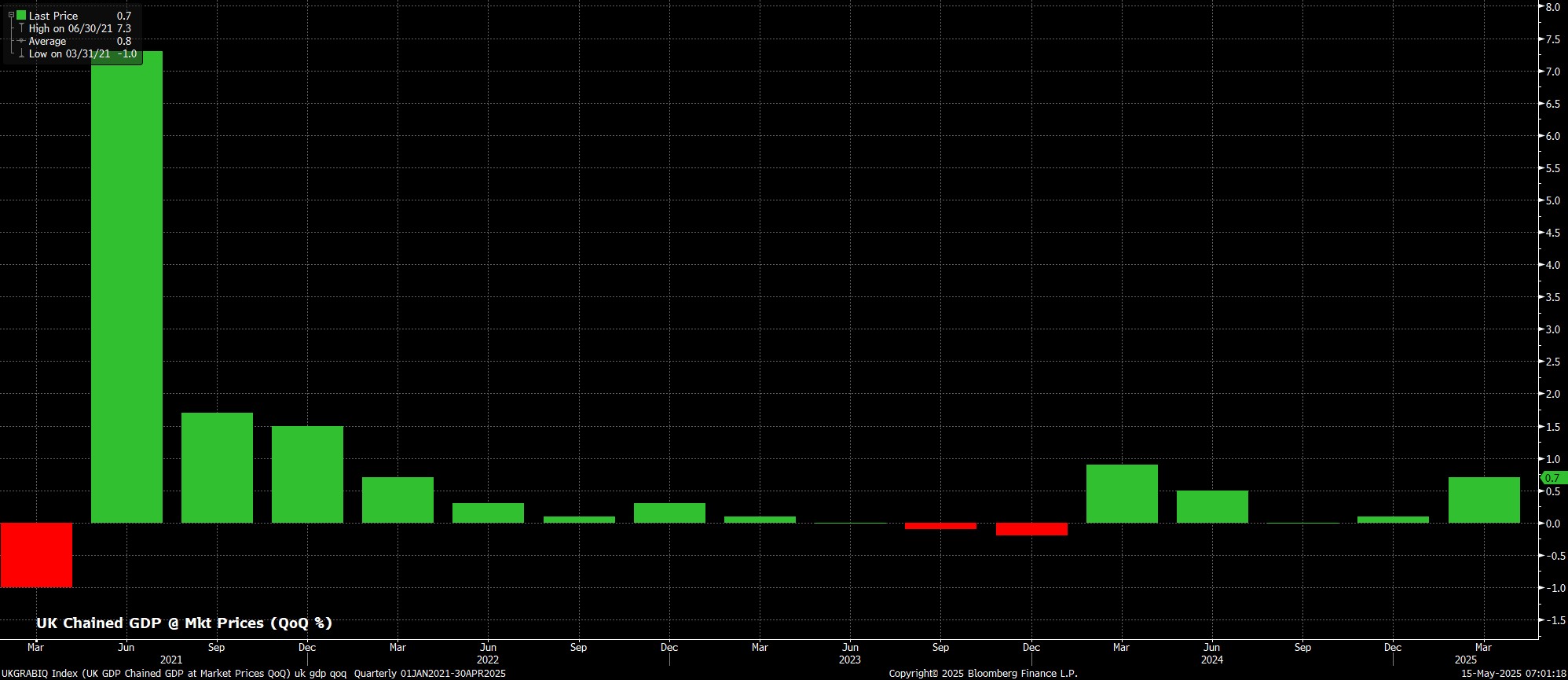- English
- 中文版
In the first three months of the year, the economy grew by 0.7% QoQ, the fastest such rate since the first quarter of last year, which in turn took the annual pace of GDP growth to a better-than-expected 1.3% YoY.

It must be said, however, that the above figures flatter the actual state of the economy, given the huge positive skew in the data from a significant amount of front-running. This takes the form of both a rush of exports ahead of the US' tariff imposition at the beginning of last month, as well as activity having been pulled forward ahead of the impacts of the National Insurance hike, and minimum wage increase, from the start of the new tax year.
Consequently, there is little point in placing much weight on the Q1 GDP data, particularly with economic momentum having waned considerably over the last six weeks or so, and with risks to the outlook continuing to tilt firmly to the downside. April's PMI surveys help to prove this point, with the composite output metric having slumped to a 29-month low, well into contractionary territory.
It seems likely that growth will remain anaemic for the remainder of the year, with the first quarter likely being as good as it gets for the UK economy for some time to come. This reflects not only the aforementioned tax changes, but also an increasingly uncertain domestic and global backdrop, which will likely continue having a detrimental impact on both business investment and consumer spending.
That, though, will also act as a further disinflationary impulse within the UK economy, further contributing to the idea that this summer's inevitable 'hump' in CPI will indeed prove temporary.
Today's growth data, though, will likely have little-to-no impact on the BoE policy outlook. A June cut remains a long shot, given the reiteration of the 'gradual and careful' guidance and hawkish vote split seen at the MPC meeting last week. Consequently, my base case remains that it will be August before the 'Old Lady' delivers another 25bp reduction in Bank Rate, though waning economic momentum, an increasingly slack labour market, and greater confidence in price pressures proving transitory will likely combine to force a faster pace of easing, perhaps in larger clips too, once the summer is out.
The material provided here has not been prepared in accordance with legal requirements designed to promote the independence of investment research and as such is considered to be a marketing communication. Whilst it is not subject to any prohibition on dealing ahead of the dissemination of investment research we will not seek to take any advantage before providing it to our clients.
Pepperstone doesn’t represent that the material provided here is accurate, current or complete, and therefore shouldn’t be relied upon as such. The information, whether from a third party or not, isn’t to be considered as a recommendation; or an offer to buy or sell; or the solicitation of an offer to buy or sell any security, financial product or instrument; or to participate in any particular trading strategy. It does not take into account readers’ financial situation or investment objectives. We advise any readers of this content to seek their own advice. Without the approval of Pepperstone, reproduction or redistribution of this information isn’t permitted.
